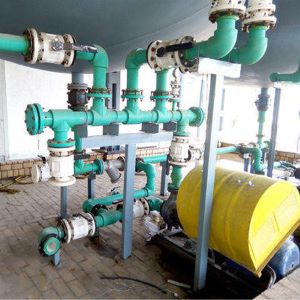Compressed Air Piping
- Aluminum – Airnet Piping
- PPRC -Plastic Piping
Plastic Pipes
Plastic pipes offer many benefits over metal, which include:
- Resistance to corrosion: This means you don’t have to worry about rust falling off your pipes and dropping into your airflow. This, in turn, reduces the risk of obstructions.
- Smooth, interior surface: The interior of a plastic pipe never deteriorates, which encourages laminar flow.
- Lightweight: Plastic piping is lightweight, making it simple to transport and fit.
- Easy to cut: Cutting plastic pipes is easy and only requires basic tools.
- Easy to connect: Plastic pipes can be glued together, which is less costly and quicker than connecting metal pipes, which must be welded together.
Metal Pipes
Metal pipes have been around for much longer than their plastic equivalents, and traditionalists prefer them when it comes to piping compressed air distribution systems. Just the look and feel of a metal pipe is more substantial and seems to have greater strength than plastic. However advanced plastic piping becomes, some people will always feel safer with metal piping rather than plastic. There are also many benefits of metal pipes when used for air compressor piping systems. These include:
- More well known: Metal is more traditional, which means more technicians know how to install the pipes.
- Longer safety track record: Having been in service longer, metal piping has proven its strength against fracture, splits and blowouts.
- They’re guaranteed not to change shape: While certain plastic materials offer great strength, metal’s inherent rigidity guarantees it won’t warp.
- Impervious to degradation: Compressor lubricants will not degrade metal pipes.


